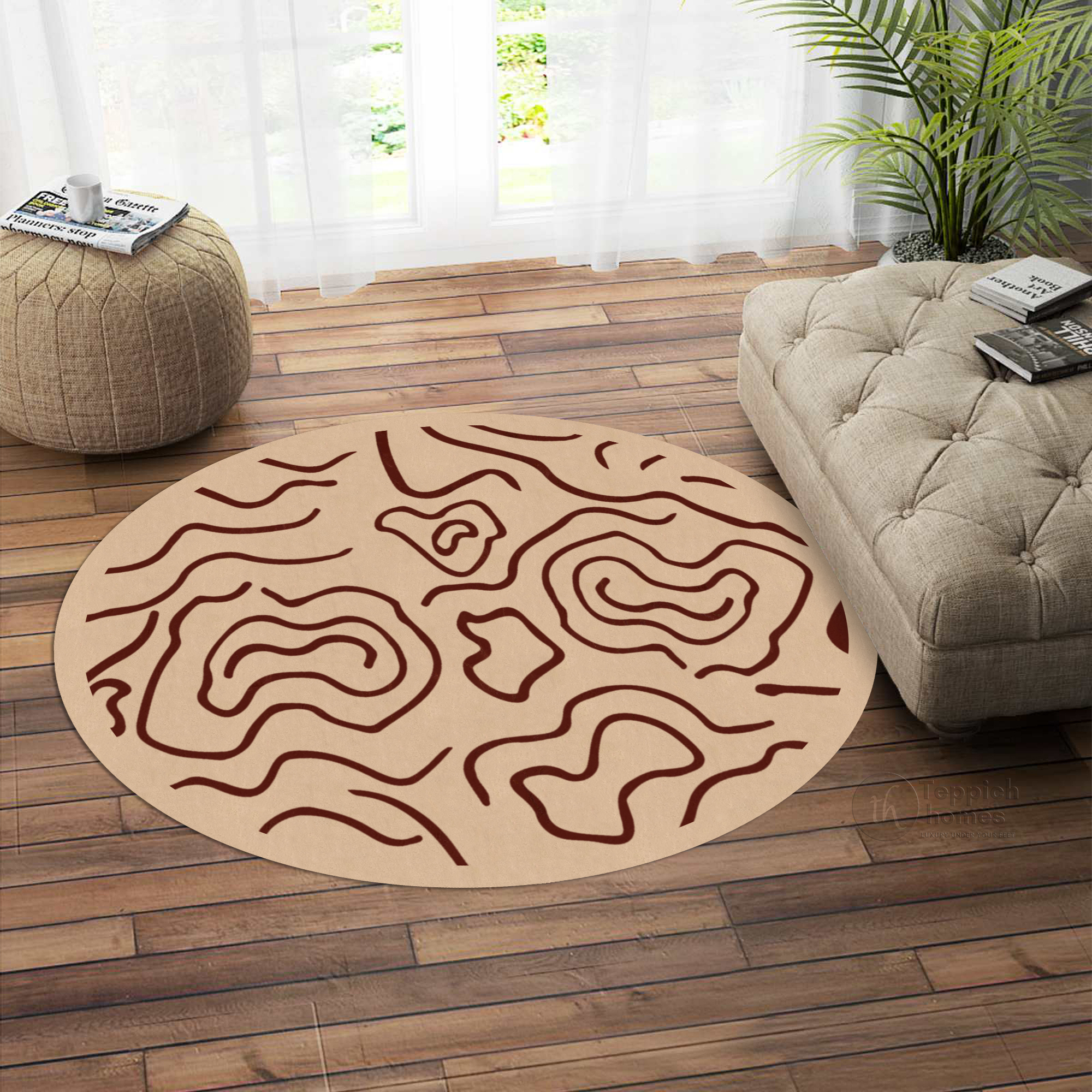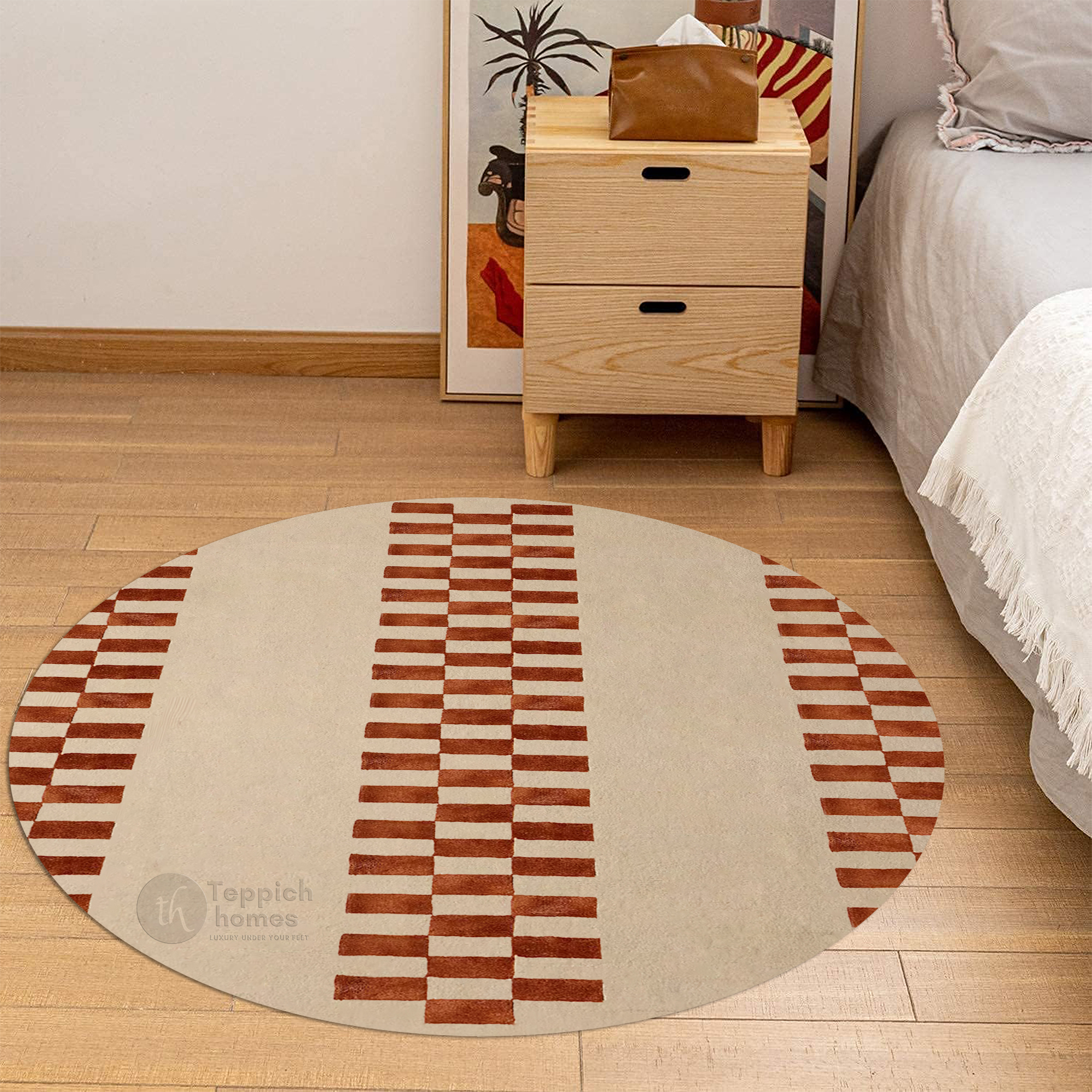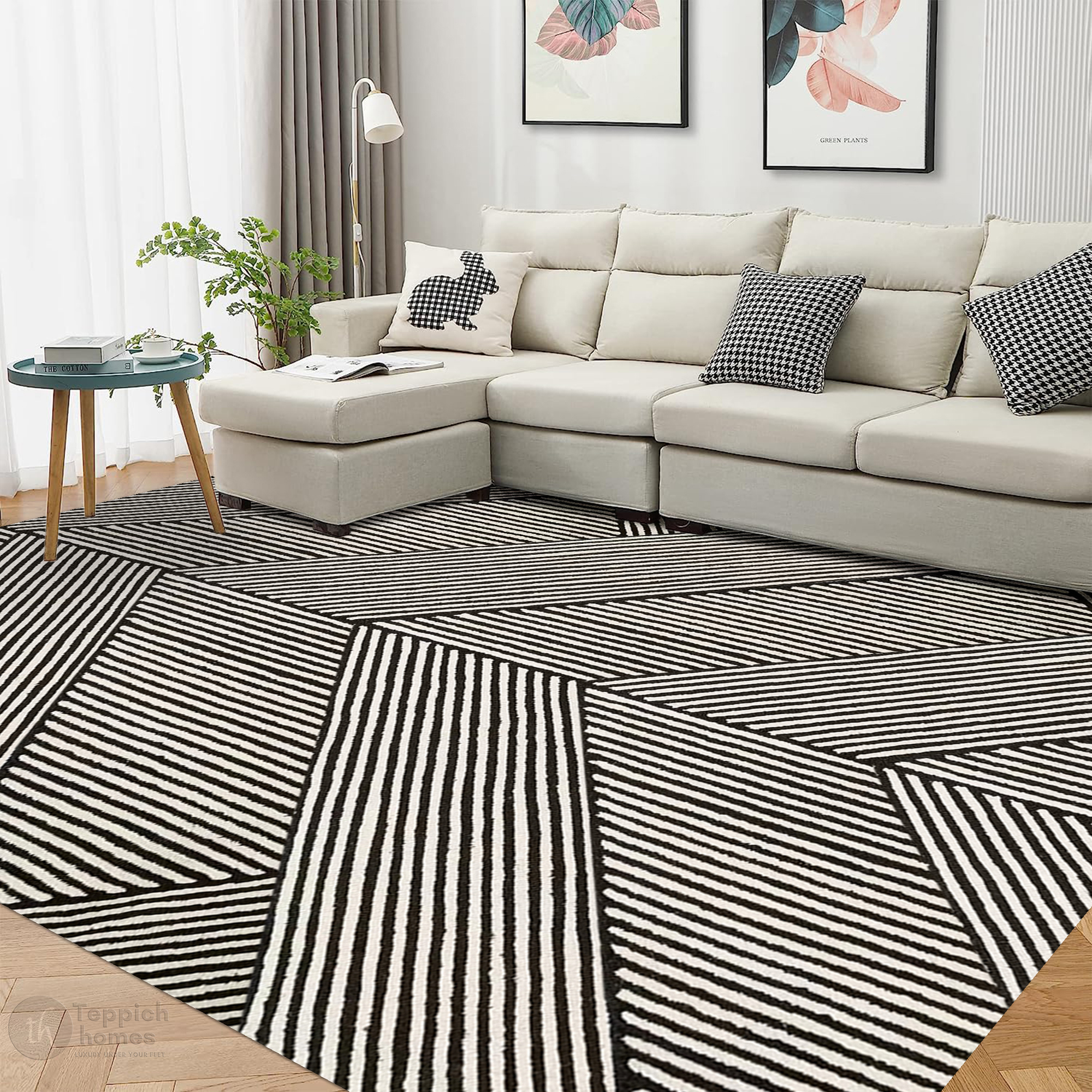
Rug layering is an art form one that holds the remarkable power to transform your living space from the ordinary to the extraordinary. It infuses your home with depth, texture, and a deeply personal touch that tells your story. By thoughtfully layering rugs, you can bring warmth to minimalist spaces, introduce character to neutral palettes, and effortlessly highlight your unique sense of style. As you embark on this creative journey, imagine the interplay of colors, patterns, and materials dancing together underfoot. A well-chosen combination can elevate your home’s aesthetic, drawing the eye and inviting guests to linger. Whether you’re dreaming of a cozy reading nook defined by plush, overlapping rugs or hoping to add dimension and visual intrigue to a spacious living room, mastering the technique of rug layering will prove invaluable. It’s more than just decor it’s a way to curate a space that feels truly yours.
In this guide, I invite you to explore the essential principles of rug layering through five insider tips designed to inspire and inform. We’ll delve into the foundational aspects like choosing the right base rug to ground your space and move on to selecting accent rugs that complement and contrast in all the right ways. You’ll discover how to balance colors and patterns without overwhelming the eye, how to mix different textures to create a sense of tactile luxury, and how to strategically place rugs to define distinct zones within an open-concept layout. Beyond styling, we’ll also touch on practical considerations: how to secure layered rugs to prevent slipping, ways to care for different materials, and simple habits to maintain their beauty over time. By the end of this guide, you’ll be equipped not only with practical know-how but also with a wealth of inspiration to help you bring your vision to life. So, let’s delve into the captivating world of layered rugs together. With a little creativity and guidance, you’ll soon unlock the potential for truly stunning interior design crafting a home that’s harmonious, inviting, and unmistakably your own.
Rug layering is truly an art form one that has the remarkable ability to elevate your space from simple to spectacular. Understanding the fundamentals is key to achieving that sophisticated, effortlessly curated look. At its heart, rug layering is about thoughtfully placing one rug atop another to craft a sense of depth, texture, and visual intrigue. But beyond just aesthetics, this technique breathes life and personality into your home, offering endless opportunities to express your style and experiment with a mix of materials, patterns, and colors. Whether your goal is to cultivate a cozy, eclectic bohemian retreat filled with rich, global textiles or to sharpen the edges of a sleek, contemporary setting with subtle layering, mastering the basics will lay a strong foundation for your design. Layering allows you to break free from traditional, single-rug layouts and embrace a more dynamic, personalized approach. When starting your layering journey, pay careful attention to the size and shape of your rugs. Typically, a larger base rug acts as a canvas that anchors your furniture and sets the stage. This foundational layer might be a neutral jute, sisal, or a soft, solid-hued wool rug something understated enough to support what comes next. Then comes your accent rug: smaller, often bolder in pattern, color, or texture, it sits on top to add personality and create a focal point. This could be a vibrant kilim, a plush sheepskin, or a hand-knotted vintage find that draws the eye and tells a story.

When it comes to choosing the right rugs for layering, it’s essential to thoughtfully consider both texture and size, as these two elements can dramatically shape the overall look and feel of your space. Layering rugs isn’t just about stacking one on top of another it’s about curating an arrangement that feels intentional, balanced, and inviting. Begin by selecting a larger, foundational rug that will serve as the anchor for your room. This base layer should be substantial enough to ground your furniture and define the area, effectively setting the stage for the rest of your decor. Neutral rugs made from natural fibers like jute, sisal, or seagrass are excellent choices because their subtle weaves and organic textures provide a versatile canvas that works beautifully with a wide range of styles. Alternatively, if you crave something cozier underfoot, a plush wool rug in a soft, understated hue can add warmth and comfort without competing for attention. Once your base rug is in place, it’s time to introduce smaller, decorative rugs that will sit on top. How to Pair Rugs with Your Wall Art is also an important consideration here look for ways to connect colors, patterns, or themes so that your floors and walls work together seamlessly, creating a cohesive, thoughtfully layered space. 
Explore➡ Minimalist Rust Striped Bedroom Area Carpet
This is your opportunity to inject personality and flair into the space. Don’t be afraid to mix different materials and pile heights layering a sleek, flat-weave kilim over a chunky jute rug, for instance, creates a delightful interplay of textures that draws the eye and adds tactile interest. Or consider draping a luxurious sheepskin or faux fur rug across part of your foundational rug to instantly bring softness and a sense of cozy luxury to the room. As you build your layered look, pay careful attention to scale. The sizes of your rugs should contrast enough to create visual depth without looking haphazard. Typically, a large area rug that extends well beyond your furniture, paired with a significantly smaller accent rug, will achieve this effect beautifully. For example, in a living room, your main rug might encompass the entire seating area, while a smaller patterned rug layered beneath the coffee table or set slightly askew breaks up the expanse and creates a focal point.
In a bedroom, a large rug that sits under the bed can be accented with a smaller, softer rug on one side to warm your feet each morning. When choosing colors and patterns, aim for harmony rather than strict coordination. The goal isn’t to match everything perfectly, but rather to find subtle connections that tie your layered rugs together. Perhaps your top rug picks up on accent tones found in your throw pillows or artwork, or its pattern echoes geometric lines present elsewhere in your decor. This approach allows each rug to stand out as a unique element while still feeling like part of a unified whole.
When it comes to layering rugs, the key is to craft a harmonious, visually engaging arrangement that enhances the character of your space while adding comfort and style. This design technique is about more than simply stacking one rug atop another it’s an artful strategy that can make your room feel thoughtfully curated, cozy, and full of personality. Begin by choosing a larger foundational rug to serve as your base. This anchor piece should ideally cover a substantial portion of your floor, defining the area and setting the tone for your overall design. A spacious neutral rug in natural fibers like jute, sisal, or a low-pile wool creates a versatile canvas that allows your accent pieces to shine. This foundational layer doesn’t just ground your furniture; it also helps visually pull the room together, creating a sense of unity.
Once your base rug is in place, introduce a smaller accent rug on top to add dimension and flair. This secondary layer is where you can really express your style. Try centering it over the base rug for a balanced, classic look, or position it at an angle for a more relaxed, eclectic vibe. Just be sure to leave enough of the base rug visible around the edges this negative space is crucial for maintaining balance and preventing the layered arrangement from appearing cluttered or overly busy. Texture and material are your secret weapons in creating a layered look that feels rich and inviting. Combining a flat-woven kilim with a plush, high-pile shag rug, for example, introduces delightful contrast underfoot. The interplay between sleek and fluffy textures draws the eye and adds tactile interest, transforming your floor into a multi-dimensional feature rather than a flat backdrop. Don’t hesitate to experiment with shapes as well. Layering a round rug over a rectangular one can break up straight lines in a room and serve as a dynamic focal point. Imagine a soft, circular Moroccan-style rug placed over a large, understated jute rug in a living room suddenly, the floor itself becomes a statement piece that guides the eye and anchors the seating area.
Strategic furniture placement is another clever way to enhance your layered rug arrangement. Try positioning a coffee table so that it sits across both rugs; this not only helps visually connect the two layers but also makes the arrangement feel intentional and cohesive. Similarly, placing a lounge chair so that its front legs rest on the smaller top rug while its back legs remain on the larger base rug subtly ties the pieces together and delineates different zones within an open-concept layout. By thoughtfully experimenting with these techniques mixing textures, playing with shapes, varying sizes, and using your furniture to integrate the layers you’ll discover just how transformative rug layering can be. It doesn’t simply elevate your decor aesthetically; it also injects warmth, softness, and an inviting sense of depth that makes any room feel more lived-in and uniquely yours.
When it comes to layering rugs, thoughtful color and pattern coordination is essential it can truly make or break your design. A well-chosen combination will feel harmonious and inviting, drawing the eye through the space, while a poorly balanced mix may appear chaotic or disjointed. The secret lies in striking the right equilibrium between interest and cohesion. Begin by selecting a dominant rug that will serve as the foundation of your palette and style direction. This piece sets the overall tone for the room. It could be a bold geometric design that injects energy and modern flair, or a richly hued solid that grounds your space and complements key furnishings. For example, a navy or charcoal wool rug might beautifully anchor a living area, providing a sophisticated backdrop against which lighter or more playful layers can shine. Next, introduce a secondary rug that either gently harmonizes with or intentionally contrasts against your base.
If your foundational rug is detailed with intricate patterns such as a Persian or Moroccan design choose a simpler top rug with minimal motifs or even a solid texture to prevent competing visuals. On the other hand, if your base rug is understated, layering a patterned kilim or handwoven tribal piece on top can add a stunning focal point without overwhelming the senses. Balance is your guiding principle here. You want each rug to stand out just enough to contribute its own character, while still playing well with the overall composition. Imagine it like dressing in layers each piece should work together to complete the outfit, without fighting for attention. Don’t overlook the power of texture. Combining a plush, luxurious shag or high-pile rug with a smooth flatweave or low-pile style creates an immediate sense of depth and comfort. This tactile interplay adds richness that a single rug simply can’t achieve. Picture sinking your feet into a fluffy ivory sheepskin layered over a streamlined jute rug it’s not just visually appealing, it’s an experience.

Explore➡ Modern Monochrome Patterned Dining Room Rug
When working with color, aim for a cohesive palette that ties back to your room’s existing elements. Look around your space for inspiration: what hues are already present in your artwork, throw pillows, drapes, or decorative objects? Use these as a guide to create a subtle thread of continuity. For instance, if your living room features soft sage accents, choosing a rug with touches of green even in a small-scale pattern will make the whole room feel thoughtfully pulled together. If you’re feeling adventurous, don’t be afraid to introduce a pop of unexpected color through a smaller accent rug. Maybe it’s a vibrant terracotta or mustard that enlivens a neutral space. The key is to ensure it still feels tied to your overall scheme perhaps by echoing a less prominent shade found in your cushions or artwork so the addition feels deliberate rather than out of place.
Once you’ve artfully layered your rugs and created a stunning, dimensional look, it’s important to protect your investment by keeping them well-maintained. Thoughtful care will not only preserve the beauty of your rugs but also extend their life, ensuring they continue to elevate your space for years to come. Start with regular vacuuming, which is essential for keeping dirt and dust from settling deep into the fibers. This is especially important for the top rug, which tends to receive the most direct foot traffic. Use a vacuum with a gentle suction setting or turn off the beater bar (which can be too harsh on delicate weaves and piles) to prevent fraying or pulling. For smaller accent rugs or delicate materials like kilims and sheepskins, consider using a handheld vacuum or even shaking them out outside to maintain their texture. When it comes to spills and stains, prompt action is your best defense. Blot (don’t rub) the area with a clean, absorbent cloth to soak up as much of the spill as possible. Then, spot clean with a mild detergent mixed with water always testing on an inconspicuous corner first to ensure it doesn’t affect the colors. For natural fiber rugs like jute or sisal, avoid excessive water and instead use a barely damp cloth to treat spots.